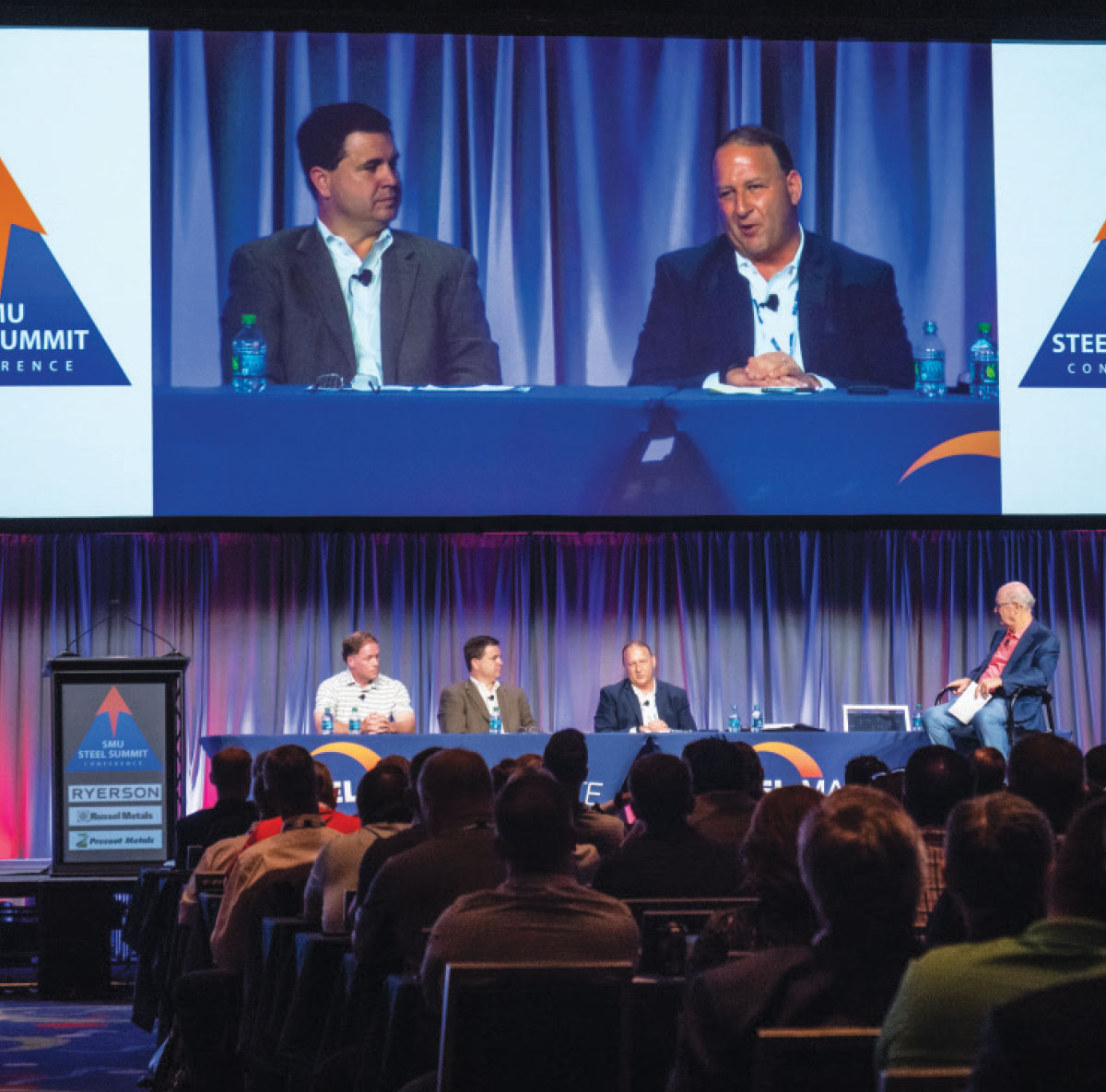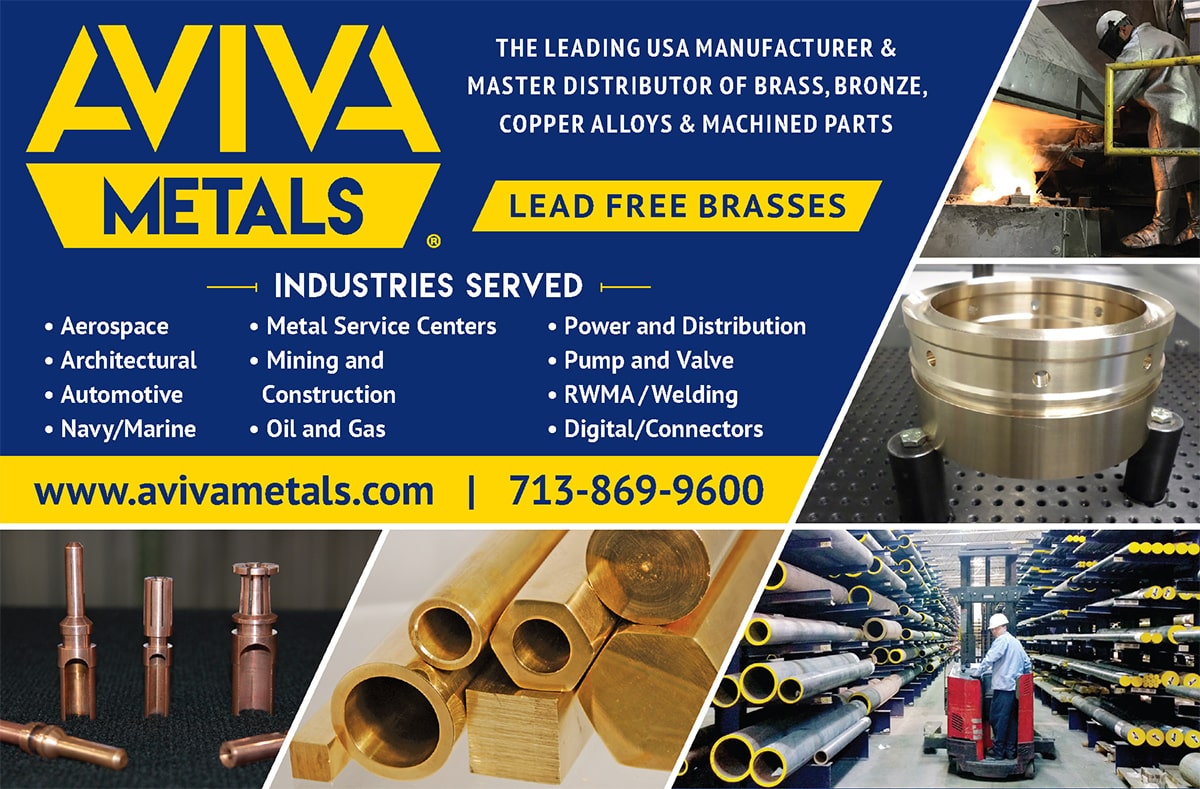here’s a song in the Broadway musical Jesus Christ Superstar called “What’s the Buzz,” which might remind some folks of the news-gathering business. John Packard, who had a long career in the steel industry, was always attuned to the buzz of industry talk and, for the past dozen years, has paid close attention to the information he heard, analyzed it and amplified it through a well-received newsletter. Packard is the founder of Steel Market Update.
Packard studied to become a teacher, graduated, went home, then asked his college sweetheart to come visit him, with the hope of proposing marriage. She broke up with him instead. “That put me at a crossroads,” he recalls.
Packard’s college roommate’s father owned a steel company just outside Chicago. He and Packard talked on the phone, and Packard drove from Connecticut to Chicago the next day. This was in 1977.
The company was a secondary galvanized house. “As a new salesman, I went through its training program and became junior salesman. I became successful fairly quickly, and they then opened an office for me in Minnesota.”
Eventually, he joined a steel processor that was on a growth trajectory. But when that company hit a rough patch, he landed at Pacesetter, which was a prime galvanized steel distributor. Packard worked for Pacesetter, a supplier of galvanized coil to the HVAC industry, for nine years. “We solicited end-user business and so the company expanded dramatically.”
He then moved on to Duferco Trading to launch a service center in Chicago. After losing that job, Packard bounced back to Pacesetter with a new territory and managed large international accounts. “I reinvented myself and became top salesman again.”
By 1997, 20 years into his career, Packard realized that he wanted to be his own boss. So he established a sales operation representing other companies, including Winner Steel and a couple of trading companies. “I represented mills and sold prime steel.” That lasted 10 years until Winner Steel was sold.
“During my time representing Winner Steel, we went through several dramatic market cycles. In 2004, the Chinese started buying commodities and lead times for galvanized went out to 14 weeks. That was a trying time for customers. I wrote my customers a note every day, telling them what was happening and what to do to protect themselves. I gave that letter away to customers through 2008.
Soon, other salespeople wanted the letter and, “before long, I had a couple thousand people I sent this to.”
“So I kept writing and I began doing more than just a sales update. I talked in more detail about mill activities, policies, pricing practices.” During American Metal Market’s Steel Success Strategy conference in June 2008, hot-rolled coil reached $1,100. Packard thought the market was about to crash.
An executive from AMM offered to buy Packard’s newsletter. “That answered a question for me: There is an exit strategy. I said no, I wouldn’t sell or work for him. I started SMU in August 2008. The market crashed in September. I had just enough loyal subscribers who would pay $750 per year to keep the operation afloat.”
Packard wrote the entire newsletter, 10 to 12 articles an issue, published three times a week—Sundays, Tuesdays and Thursdays. “We did indexing on Tuesdays so as not to be accused of stealing numbers from others,” he says.
The primary purpose of SMU is “is to help people understand why things are happening, so they can do their jobs better. I used that in my sales career, too. It’s not news, but information and understanding what that information means.”
Packard developed his industry sources from 1977 to the present. “My contacts came from among all the steel buyers, many who became vice presidents and presidents and CEOs over the years. As time went on, I learned not to poke the mills in the eye but to work with them in mutual respect.”


“One thing I didn’t like about other conferences is having steel mill CEOs talk about the unions, accident rates and everything but what was happening in the market,” Packard says. “I thought there was a better way to provide quality market intelligence.”
The first, one-day SMU conference was held in Las Vegas in 2010, in conjunction with Metalcon.
“I brought in the vice presidents of commercial—Jim Banker from NMLK, Ricardo Bernardes from California Steel and Charlie Trowbridge from Steel Dynamics—as speakers,” he says. “We talked about what was happening in the market, the challenges they faced, what customers were telling them.”
There were 110 people at the first conference. Packard asked each to introduce themselves to their fellow attendees. “That set the tone for the conference forever. We are all-inclusive. We talk about challenges and opportunities and try not to lie to people. We bring different views and opinions and let attendees make up their own minds about the direction they should go.”
In 2011, the SMU conference saw 250 attendees, then 400 the next year. When the event became strong enough to separate from Metalcon, Packard moved the show to the Georgia International Convention Center in Atlanta.
Says Packard, “I had four companies approach me to purchase SMU.” When he met with the CEO of CRU Group, “I was impressed with their grasp of the marketplace. SMU and CRU both understood that the synergies were exceptional. Each had strengths that add to and balance one another. We fit very well.”
The merger closed in June 2018. Packard says he just signed a new contract to continue leading SMU. He credits CRU with employing “bright, dedicated, hardworking people. Their analysts and statisticians help me build new things,” such as a service center inventories and shipments index.
One of the things he feared would happen after a merger was the new owner “would take the price of my product and make it unreasonable. That did not happen. There is a need for quality information that people can afford. One of our early philosophies, which remains, is we want to expand the number of subscribers within a company who interact with the material,” Packard says.


On June 1, SMU decided to go virtual with its Aug. 24-26 event. “We are building a platform with Engagez. They have been doing this a number of years. The hard part is making people understand that it’s not a series of webinars. Instead, we are going to tell a story,” Packard explains.
“This event will be very different. You don’t click on a link and go through Zoom. This platform will look like conference hall. You can go to the auditorium, to the lounge to network, go to exhibition hall and talk to people at booths. Go to the information desk. Look up attendees and ask to participate in video chats one on one.
“It will be as close as possible to a live conference,” he says. “The agenda itself should be more like interactive TV. People will be able to ask questions live and then speakers will be able to chat in the lounge with attendees.”
Participants can ask speakers to talk privately in a chat room and request private chats with one another. “You will know who is there, by displaying a name, title and company. That’s better than trying to read name tags,” says Packard, adding that he wants this to be the steel event of 2020.
